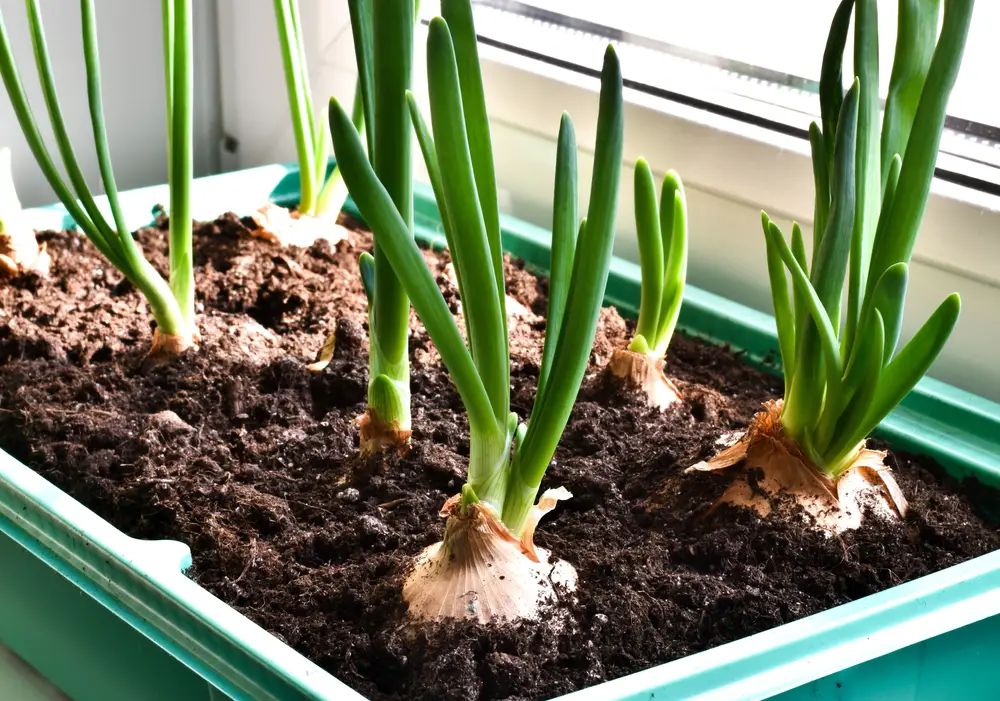How to start an indoor vegetable garden is not difficult with this guide! Growing vegetables indoors can be just as satisfying as growing them outdoors. Even better, you won’t have any worries about the changing seasons or weather.
You control everything!
Thankfully, growing a few small vegetables in your home or other living space is not difficult. However, you do have some important things to think about before starting. But with some careful planning, the process will be easy and successful.
First, choose the right location.
1 – Choose The Right Location
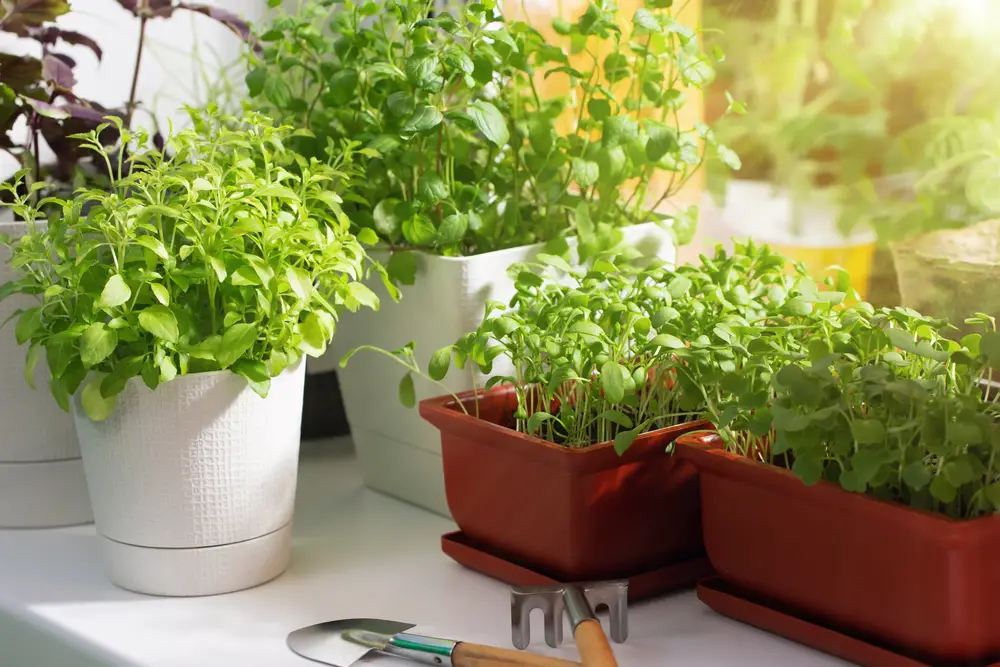
Vegetables can take up as little space as a windowsill or as much as an entire room (think heated sunrooms or a basement), depending on what you decide to grow.
Indoor vegetables like a nice even temperature of about 60-70 degrees Fahrenheit (15-20 degrees Celsius), depending on the variety.
So, find a location without cold drafts from a window or doorway to the outside that sees regular use in the winter.
Also, make sure the spot isn’t near a heat source like a wood stove, gas fireplace, or heat vent. Heat sources like these can dehydrate plants very quickly. The same goes for air conditioners or fans.
2 – Get Your Supplies
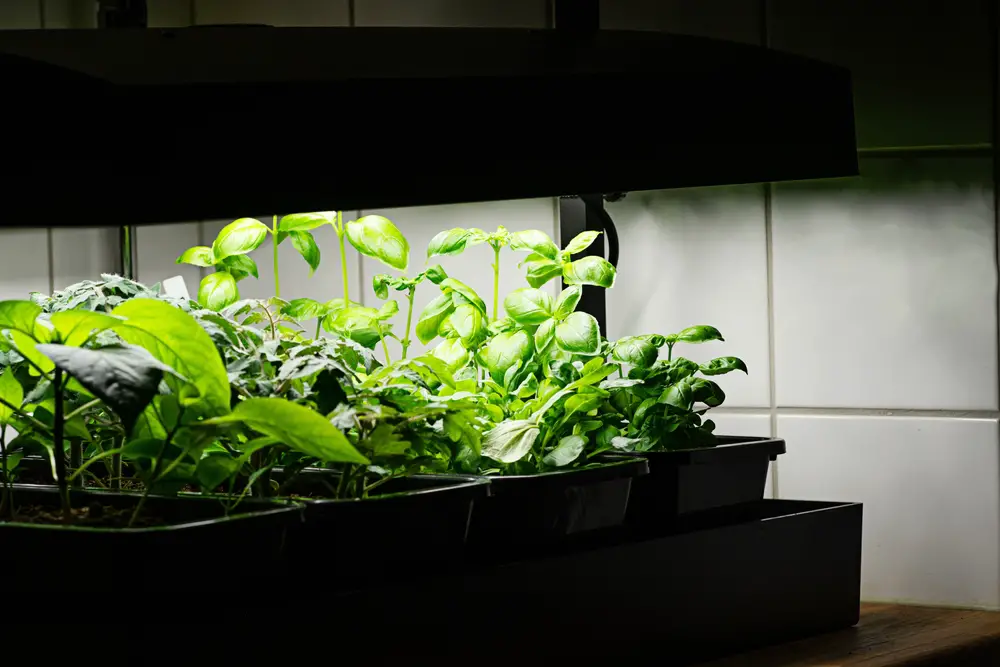
Lights And Timers
Most people think of air temperature when considering factors limiting plant growth in the spring and fall. However, the amount and strength of the sun also change with the seasons.
It may be warm enough for your vegetables indoors, but they will also need enough light to grow well. Winter sunlight isn’t as strong, and the days are shorter. So, even a sunny south-facing window that gets sun all day may not provide enough light for vegetables to grow well indoors in winter. Even the summer sun through windows may not always be enough, depending on the window’s direction.
You will likely need to supplement daylight with a proper grow light set-up for your indoor vegetables. Different options are available, and your choice will depend on what you want to grow. Bulbs come in different sizes and shapes and give off different types of light. You can even set up grow lights in spaces without any windows.
You’ll also probably want to add a timer to your grow light set-up, so you don’t need to keep track of how long they’ve been on every day and remember to turn the lights on and off.
Containers
Size
You’ll want to match the size of the pot to the mature size of the vegetable plant you want to grow. The taller and bushier the plant, the deeper and wider the pot you’ll need. Basically, the bigger the variety of vegetable plant (i.e., the taller the plant is going to get), the more soil depth you’ll need to give it to support its root growth and to anchor the weight of the top growth so it doesn’t fall over.
Also, the deeper the soil, the more moisture it will hold and the less frequently you’ll need to water your plants.
You can grow most smaller vegetables, like lettuce and radishes, in soil about 8 inches (20.32 centimeters) deep.
Smaller greens like leaf lettuce could work in grow pots as small as 4 inches (they’re 4 inches (10.16 centimeters) across and deep), one plant per pot if that’s all you can find, but most vegetables will need more depth.
Larger plants like bush beans and tomatoes will need soil at least 12 inches (30.48 centimeters) deep.
Standard window boxes are a good choice to start with for smaller varieties. You can plant more than one plant in a window box but be sure to leave enough room around each plant so they aren’t crowded and get good air circulation once the plants grow in.
If you don’t use a window box, you’ll want to plant just one plant per container to allow plenty of room for its roots to grow and to give the plant good air circulation. You can grow leafy greens like lettuce closer together.
Drainage
Whatever container you choose, it MUST have drainage holes in the bottom, so excess water can drain away after you’ve watered. Otherwise, your plants may suffer root rot and die because it’s just about impossible to tell how moist the soil is at the bottom.
Beware containers calling themselves “self-watering.” They have a reservoir in the bottom to hold extra moisture. However, unless there’s a way for you to monitor the water level in the reservoir (like a little plastic window in the side of the pot), you’ll have no way of knowing when you need to refill it. Overfilling can result in too much moisture in the soil at the bottom of the pot, resulting in root rot.
Potting Mix
You’ll need a good-quality potting mix labeled specifically for use in containers.
Don’t use soil from your garden beds or bagged products labeled “topsoil.” It’s too dense for plants in containers.
Soil from your garden may also carry pests or plant diseases inside.
Some potting mixes have fertilizers already mixed in. Be sure you know what you’re buying so you know whether or not you’ll need supplemental fertilizers for your vegetables.
After six weeks or so, once your vegetable plants are several inches tall with lots of leafy growth, the nutrients in these ready-made mixes will probably be depleted (check the soil packaging for details). You’ll need to start using a water-in fertilizer or mix in a fertilizer into the top few inches of the soil.
Fertilizer
Indoor plants grown in commercial potting mixes need supplemental fertilizer to grow well because potting mixes generally don’t contain nutrients. Sometimes, they do, but those nutrients only last a month or so.
You can use either a liquid fertilizer or a slow-release fertilizer.
You add liquid fertilizers to the water when you water your plants. The plant takes up the nutrients right away with the water.
You’ll need to remember to add the liquid fertilizer to the water every few waterings (usually once a month, sometimes twice, or more often, depending on the fertilizer and type of plant) and keep track of when you’ve used it. Fertilizer salts can build up over time in a container, and adding too much can be toxic to plants.
Slow-release fertilizers are powders or pellets you add to the soil. They come in different formulas. They either release the nutrients every time you water or slowly break down in the soil to feed your plants over time.
Generally, you would mix these fertilizers into the soil before planting, but you can mix them into the top few inches of soil or sprinkle them on the soil surface (depending on the formulation) once the plant is growing. The fertilizer package will explain how to apply them and how often you need to reapply them.
What fertilizer you choose is up to you.
Personally, I’m too lazy to remember to add the liquid fertilizers with my regular watering schedule, so I like the slow-release option of add-it-once-and-forget-about-it.
Misting Bottle
Indoor environments can be very dry, especially in regions with winter indoor heating. To help vegetables stay better hydrated in such conditions, using a spray bottle on the mist setting is a good idea to moisten the air around your plants every day or two.
Instead of a misting bottle, you can also stand your pots on a large tray of pebbles filled with water (Be sure the pot sits OVER and not IN the water). The water will evaporate and keep the air a little more humid.
You could also use a humidifier near your plants in a larger space.
Small Fan
Plants like good air circulation to reduce the risk of pests and disease. Depending on how many plants you have and how much space they occupy, you might want to set up a small fan to keep a gentle air flow through larger spaces. This will also help to pollinate those varieties that need it.
Sticky Traps
Vegetables, like houseplants, are prone to insect pests. Sticky traps are a product that can help you monitor if/when you have a pest problem. They won’t prevent pests but can alert you to pests like whiteflies, aphids, or soil gnats.
3 – Choose Your Plants
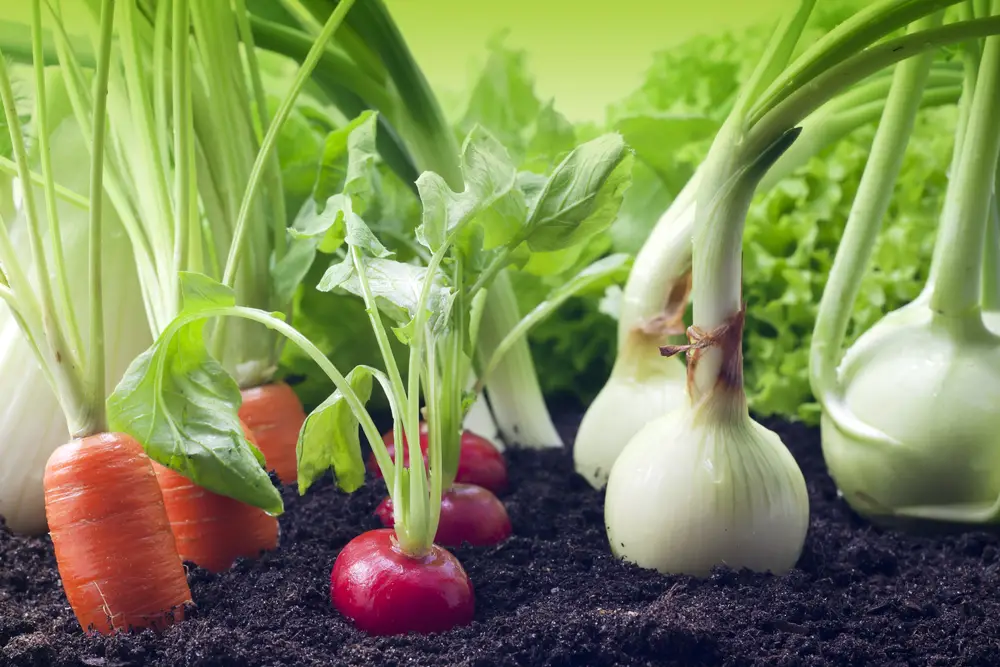
Different varieties of vegetables have different heat tolerances and different light requirements. Some are more challenging to grow indoors than others. This is something to keep in mind when you start your indoor vegetable garden.
Leaf lettuce is a good choice to start your indoor vegetable garden. Harvested a few leaves at a time, leaf lettuce can be ready to harvest in as little as 4 to 6 weeks from seed, and harvest can last several weeks.
Heat-lovers like tomatoes, peppers, and cucumbers (technically all fruits, but they’re eaten as vegetables) tend to be more challenging to grow indoors, but it’s not impossible. They need plenty of light, good supports and some varieties can take up a lot of space.
If your indoor growing space is limited, choose varieties labeled for container growing; the plants won’t be as big and won’t take up as much space.
Then there’s the challenge of pollination. Vegetables such as tomatoes and cucumbers need pollination, which the pollinators (bees, butterflies, birds, etc.) usually take care of outside. So you’ll have to do their work for them indoors.
4 – Choose Seeds Or Starter Plants
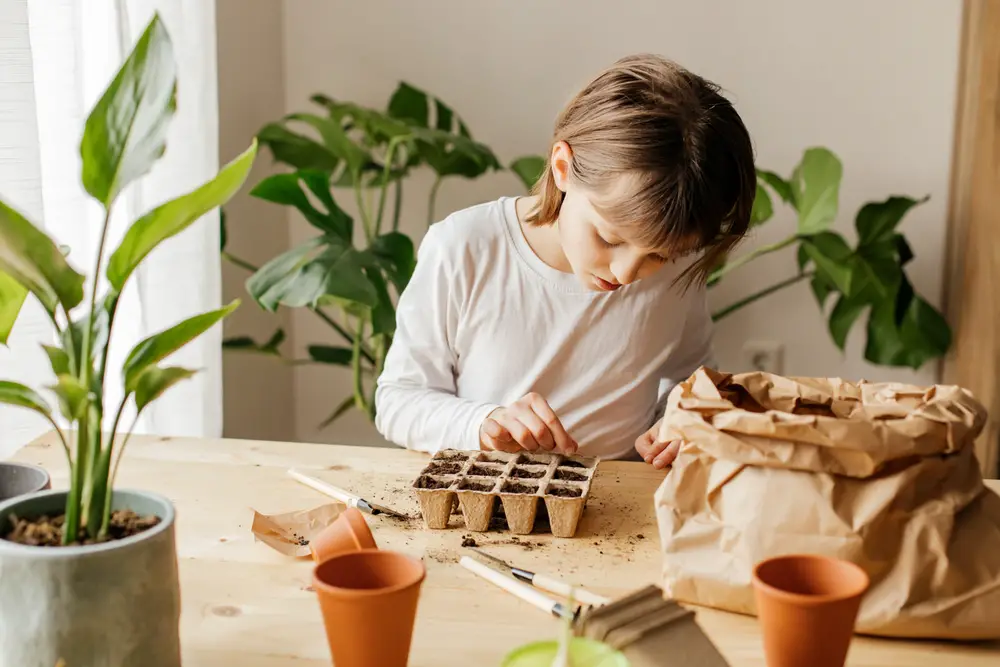
Just like growing a vegetable garden outdoors, how to start an indoor vegetable garden means you have to choose between using seeds or buying starter plants.
Buying starter plants is less work, and you’ll have a harvest a lot sooner, but they’re only available at local garden centers in spring or sometimes fall.
You can buy seeds any time of year to start indoors, but you’ll be waiting a few weeks longer to eat what you’ve grown.
Starting seeds indoors can sometimes be challenging.
Since you’ve decided to grow your vegetables indoors, you will already have some of the things you’ll need, beginning with proper grow lights. Seeds are fussy about the light they need to germinate. And then, if they don’t have enough light once they’ve germinated, the plants will grow tall and skinny and not very robust as they reach for whatever light there is. Growing seeds on a windowsill usually won’t provide enough light, so a grow light set-up is important.
Once you’ve chosen, you can start your indoor vegetable garden!

